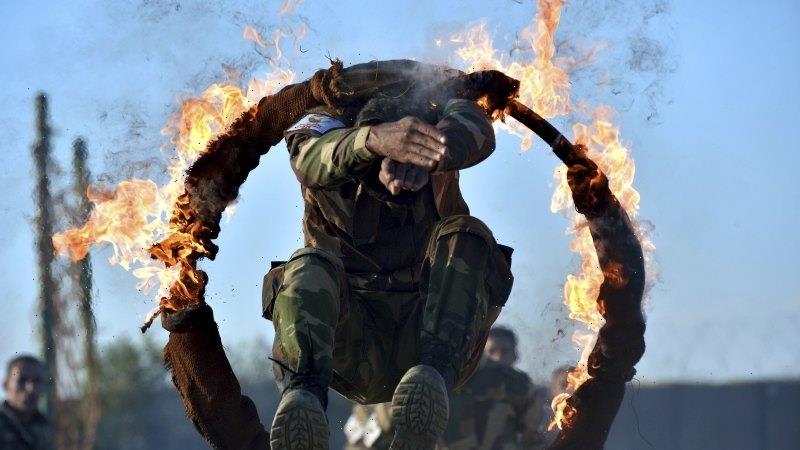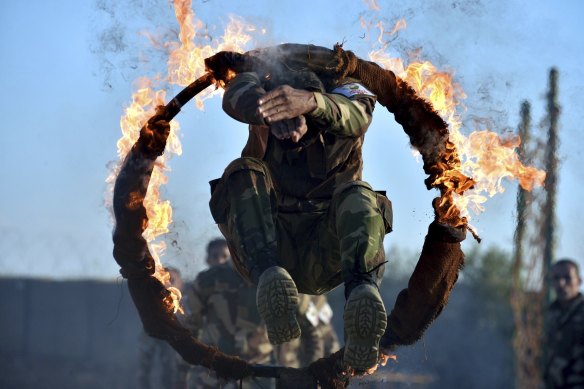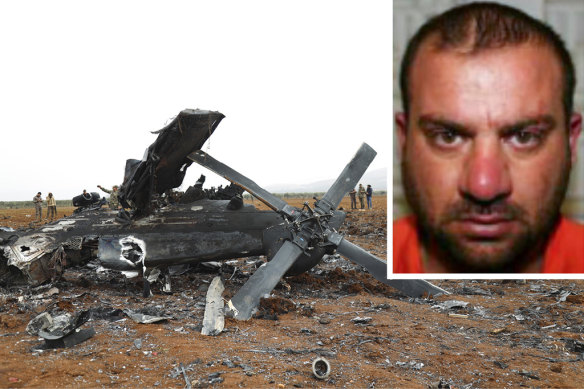Third Quraishi named IS leader after deadly Free Syrian Army strike
Cairo: Islamic State militant leader Abu al-Hassan al-Hashemi al-Quraishi was killed in an operation carried out by the rebel Free Syrian Army in mid-October in Syria’s Daraa province, another heavy blow to a group that once struck fear across the Middle East.
No US military troops were involved in the operation, a US military spokesperson said on Thursday (AEDT).
Turkey-trained Syrian opposition fighters Free Syrian Army, train in a camp in the Turkish-controlled Azaz, Syria. Credit:AP/File
Earlier a spokesperson for the terrorist group, in an audio message posted on an affiliated Telegram channel, said Quraishi had been killed while “fighting enemies of God”, without elaborating.
Quraishi is the second IS leader to be killed this year at a time when the extremist group has been trying to rise again with its sleeper cells carrying out deadly attacks in Iraq and Syria. Its affiliate in Afghanistan also claimed attacks that killed dozens in recent months.
It was not clear why the announcement was made on Wednesday, more than a month after Quraishi was killed.
“ISIS remains a threat to the region,” the US Central Command said using the group’s other acronym. “CENTCOM and our partners remain focused on the enduring defeat of ISIS.”
Abu Ibrahim al-Quraishi, who was killed by the US in February, and the wreckage of a US helicopter that malfunctioned and was later destroyed from the air by US planes.Credit:AP
The Britain-based Syrian Observatory for Human Rights, an opposition war monitor, reported in mid-October, that Syrian rebels who had earlier reconciled with the government killed a group of IS fighters in the southern village of Jassem in Daraa province.
They included a commander identified as an Iraqi citizen along with a Lebanese fighter and others, the observatory said, adding that one of the IS fighters detonated an explosive belt he was wearing during the clash.
Little had been known about Quraishi, who took over the group’s leadership following the death of his predecessor, Abu Ibrahim al-Hashimi al-Quraishi, in a US raid in north-west Syria in February.
Abu al-Hussein al-Husseini al-Quraishi was named the new leader, the IS spokesman added. No details about him were given in the audio.
None of the Quraishis (or Quarayshis) are believed to be related. Al-Quraishi is not their real name but comes from Quraish, the name of the tribe to which Islam’s Prophet Muhammad belonged. IS claims its leaders hail from this tribe and “al-Quraishi” serves as part of a leader’s nom de guerre.
Hassan Hassan, author of a book on the group, said it was diminished. The latest death “doesn’t mean the group is finished, but for now it is a shadow of its former self, they are hollowed out in terms of their leadership and their ability to carry out attacks,” he said.
“They don’t have iconic, charismatic leaders any more, and they haven’t carried out any major attacks recently.”
The White House welcomed the news pf the killing, National Security Council spokesman John Kirby told reporters.
IS emerged from the chaos of the civil war in neighbouring Iraq and took over vast swathes of Iraq and Syria in 2014. Former IS leader Abu Bakr al-Baghdadi declared an Islamic caliphate from a mosque in the northern Iraqi city of Mosul that year and proclaimed himself caliph of all Muslims.
The group’s brutal rule, during which it killed and executed thousands of people for its narrow interpretation of Islam, came to an end in Mosul where Iraqi and international forces defeated the group in 2017.
Since the peak of its power seven years ago, when it ruled millions of people in the Middle East and frightened the world with deadly bombings and shootings, it has slipped back into the shadows.
Its remaining thousands of militants have in recent years mostly hid out in remote hinterlands of fractured Iraq and Syria, though they are still capable of carrying out significant insurgent-style attacks.
Reuters, AP
Most Viewed in World
From our partners
Source: Read Full Article



